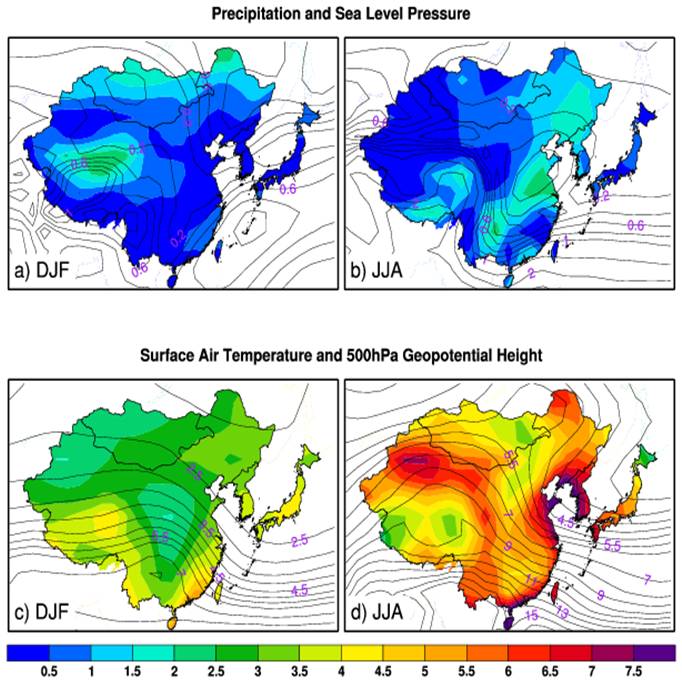Importance of the Internal Variability in Regional Climate Projections
Date:2016-03-07
Under global warming, regional climate changes are particularly relevant for effective decision-making on how to manage adaptation and mitigation, and how to cope with potential losses and damages at the regional scale in a future warmer climate. However, regional climate projections have emerged as a pressing challenge in climate science due to large uncertainties. These uncertainties mainly result from model-response uncertainty, emission-scenario uncertainty and internal variability of the climate system. The first two uncertainties may be potentially reduced as climate models are improved and emission scenarios become more accurate.
However, to a larger extent, internal variability-induced uncertainty is mostly unable to be reduced owing to the inherently unpredictable and spontaneous nature of internal variability of the climate system. Therefore how to detect and quantify the internal variability becomes a hot topic.

Figure. Signal to noise ratio maps for precipitation (color) and sea level pressure (contour), and surface air temperature (color) and 500hPa geopotential height (contour) in boreal winter (DJF) and summer (JJA) during 2005-2055 over East Asia.(Yao et al, 2016)
Recently, HUANG gang and YAO Shuai-Lei from the Institute of Atmospheric Physics, and Jing-Jia LUO from Bureau of Meteorology, Melbourne demonstrate that projected precipitation trends are subject to considerably larger internal uncertainty and hence have lower confidence, compared to the projected surface air temperature (SAT) trends in both the boreal winter and summer. Projected SAT trends in winter have relatively higher uncertainty than those in summer. Besides, the lower-level atmospheric circulation has larger uncertainty than that in the mid-level. A substantial portion of internally-induced precipitation and SAT trends arises from internal large-scale atmospheric circulation variability.
These results, recently published in PloS One, highlight the importance of internal climate variability in affecting regional climate projections on multi-decadal timescales.
Reference:
Yao S-L, Luo J-J, Huang G (2016): Internal Variability-Generated Uncertainty in East Asian Climate Projections Estimated with 40 CCSM3 Ensembles. PLoS ONE 11(3): e0149968. doi:10.1371/journal.pone.0149968
Contact:
HUANG gang, E-mail: hg@mail.iap.ac.cn
